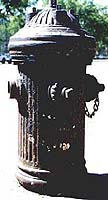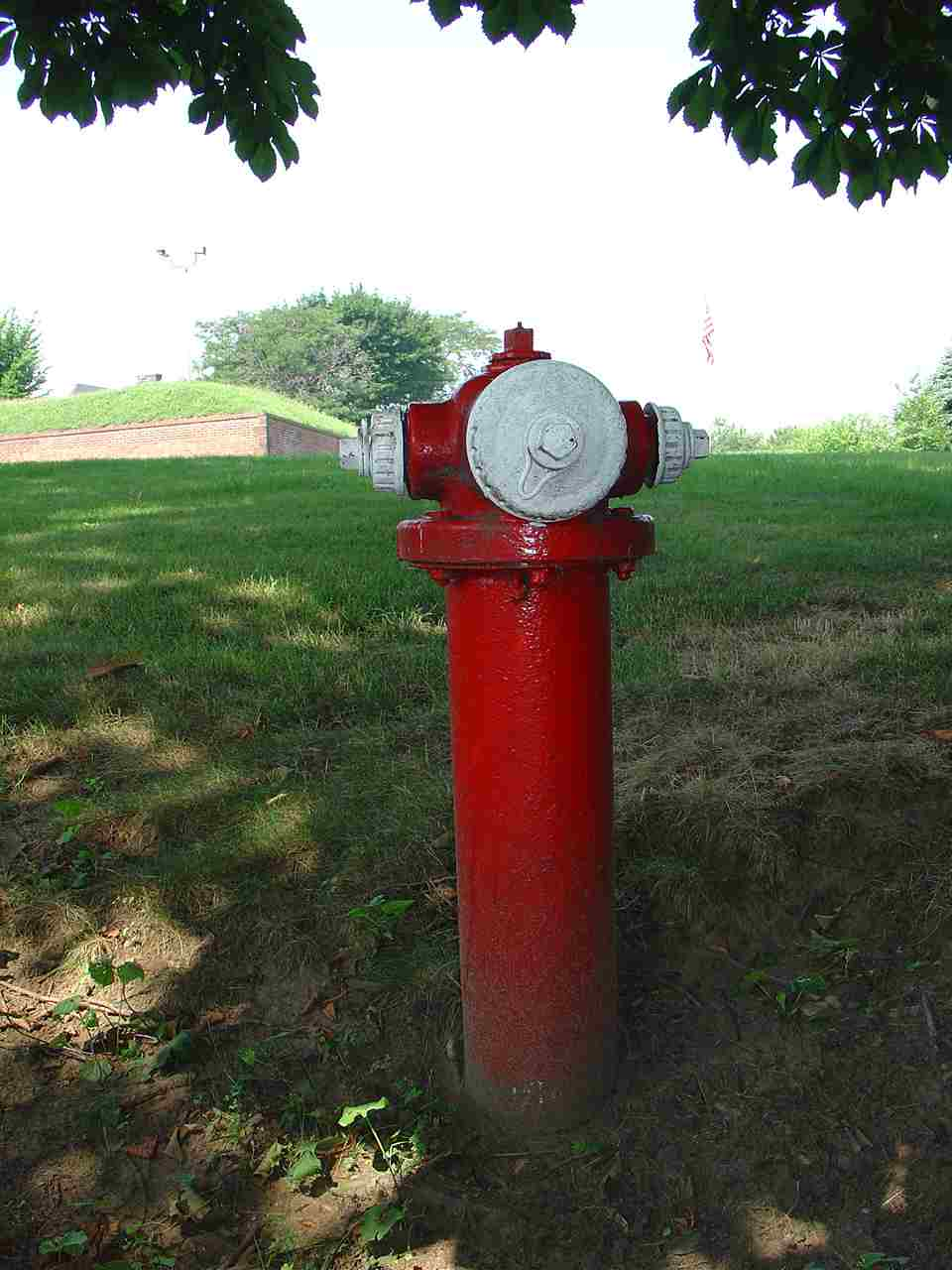|
| |
Current Exceptions to the SpecificationLike any rule, the New York City hydrant specification has many exceptions. We will document as many as possible below.A.P. Smith O'Brien High Pressure Hydrants
Known as "stubbies" by NYC firemen, these hydrants were of a larger diameter than other O'Brien hydrants and generally had 4 independently gated nozzle outlets. The hydrants weighed approximately 600 to 800lbs and were exclusively supplied to the city by A.P. Smith until the late 1920s/early 1930s when high pressure systems were becoming obsolete due to the evolution of the steam engines and better water pumping devices. Around 1979, the high pressure hydrant system was shut down for good and the hydrants sat dormant for almost 15 years, downgraded to the simple duty of collecting parking ticket revenues for the city. In 1993, the city decided it was time to remove the "stubbies," and within two years, all 813 high pressure hydrants were extinct in Brooklyn; by 1996, all 213 Coney Island hydrants were gone. In 1998, almost twenty years after being deprived of water, plans were underway to remove the last 2,079 O'Brien High Pressure hydrants from Manhattan. This number has this number has been greatly reduced, and these hydrants can now only be found in the financial district (although one lone high pressure hydrant remains on Broadway at Astor Place). A few high pressure hydrants made it into other buroughs of the city. Two can be found in front of 1610 Eastchester Road in the Bronx, and another two are right up the street at 1735 Eastchester Road. There are at least three high pressure hydrants at the New York City Fire Academy on Randall's Island. Fort Wadsworth Fort Wadsworth, located on Staten Island near the Verrazanno Bridge, is equipped with Mueller and Clow hydrants in addition to the usual New York City specification hydrants. Governors Island Governors Island is a small island located off the southern downtown tip of Manhattan on the Brooklyn side. It has served as a military and later coast guard base for several hundred years and is currently owned by the federal government, although it is technically part of New York City (Manhattan specifically). The island is equipped with two types of hydants: a 1956 model by R.D. Wood and Mueller hydrants. Most Governors Island hydrants have an additional spring attachment on the bonnet. As a side note, almost all the hydrants on the island are painted red and white, although a few black hydrants by both manufacturers can be found. Metropolitan Transit Authority (MTA) The MTA has installed Mueller and M&H Valve hydrants at the railyards between the Bay 50 Street and Stillwell Avenue - Coney Island stations. Parks & Recreation
The Mueller in Tomkpins Square Park (located in the dog run section) is of special interest because it is specially equipped with water faucets instead of valves.
The PANYNJ has installed America Darling Valve hydrants near the entrance to the Lincoln Tunnel (especially along Dyer Avenue between 34th and 42nd Streets) and near the entrance to the George Washington Bridge. Triborough Bridge and Tunnel Authority (TBTA) The TBTA has installed Kennedy Valve "Mathews" hydrants on the Staten Island entry to the Verrazano Narrows Bridge (completed in 1964).
Ward's Island Homeless Shelter The Charles H. Gay Shelter Care Center on Ward's Island does not follow the city's specification rules. The grounds of the facility include hydrants manufactured by Kennedy, Clow, and Mueller, in addition to the regular specification hydrants. As of mid-2001, these hydrants have all been painted red, and are hand-numbered with white paint. World Trade Center (WTC) The WTC lacked traditional standalone hydrants. Instead, high pressure "wall hydrants" were installed in various sections along the outside walls of the seven buildings that comprised the World Trade center.
|



